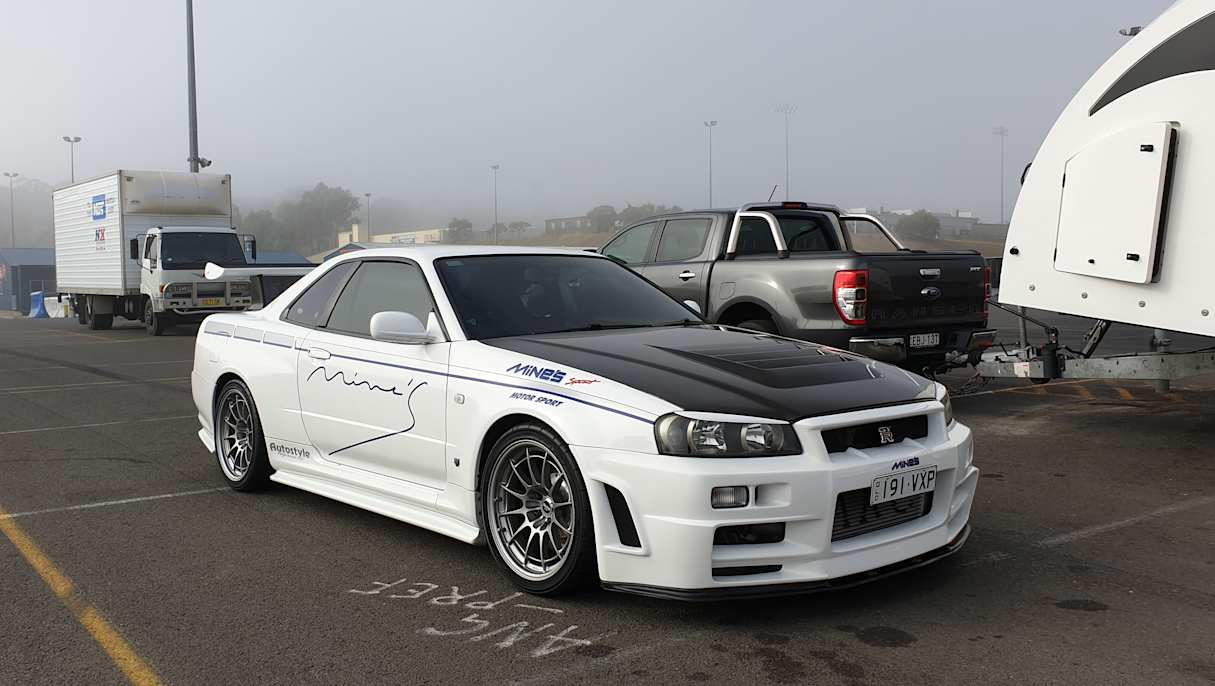Nissan’s legendary GT-R badge was celebrated in style at Sydney Dragway this past weekend at the GT-R Festival. Since the top-dog racing model of the Skyline was introduced half a century ago in 1969, it has become a symbol for Japan’s technological superiority over traditional supercar manufacturers and old V8 muscle cars.
Organised by renowned Skyline fiend Andrew Hawkins of Motive DVD, GT-R Festival corralled some exceptionally rare, desirable, and expensive examples of Nissan’s most ferocious production car. This included a pair of genuine R34 GT-R Z-Tunes, considered the ultimate factory-built GT-R with less than 20 ever constructed using genuine Super GT GT500-class racing parts. The owner of one of these rare beasts actually had a replica built using a regular R34 GT-R, which isn’t a cheap exercise given their exploding prices!

There was a host of street/strip GT-Rs running fast times at GT-R Festival, with Croydon Racing Development’s JUN II R32 GT-R having run in the 6-second bracket at over 200mph, making it arguably the quickest street registered car in Australia. They have an epic rivalry with another Sydney Nissan workshop, Maatouk’s Racing, who have their own blisteringly quick 200mph R32 GT-R known as KING32.

This green four-door R32 GTS might not look too interesting beside some of the 6-second GT-Rs on display, but the naturally aspirated RB26DE under the bonnet makes this special. Only 200 of these olive green four-doors were built by Autech, all with non-turbo RB26s and GT-R four-wheel drive systems, and this is almost certainly the only one in Australia.
For me, the car I wanted to take home was the Mine’s Tuned For Response R34 GT-R I wrote a feature story on back in 2005. I started my career in automotive media working on late-model tuner magazines and the Mine’s Tuned For Response GT-R was the ultimate Skyline back in those heady JDM tuning days. The two Mine’s cars at GT-R Festival weren’t the original Japanese car, obviously, but the car I wrote the story on was built in collaboration with Mine’s parts using all their genuine parts.

While the first Skyline GT was actually built by Prince, the first Skyline to wear the red R badge was the 1969 four-door PGC10-series GT-R and the more famous two-door KPGC10 which owned the domestic touring car racing of the time. These first-generation GT-Rs are known as Hakosukas, and you can spot most replicas built off lower-spec models as the twin-cam S20 DOHC in-line six is rare and expensive.

The KPGC10 GT-R was superseded in 1973 by the new C110-generation GT-R, otherwise known as the “Kenmeri” series thanks to a popular ad campaign of the time featuring “Ken and Mary”. Built only for one year, only 197 C110 second-generation GT-Rs were built making them one of the rarest GT-Rs ever offered. This was the last time the GT-R badge was used until the R32 “Godzilla” was introduced in 1989.
A trio of lightweight homologation-spec Nismo N1 GT-Rs were on display, all owned by one lucky Sydneysider. The R32, R33 and R34 N1s featured many significant upgrades over regular production GT-Rs to make them formidable weapons in class-based racing programs around the world.
The car that smashed Group A racing, Nissan’s technological tour de-force arrived in 1989 and brought the Skyline GT-R badge back for the first time in 16 years. A twin-turbo 2.6-litre in-line six-cylinder, four-wheel-drive, four-wheel-steer, multi-link independent suspension, big four-pot brakes and more meant the GT-R was soon nicknamed Godzilla by Wheels magazine for its ability to smash everything in its path. And that was before tuners got their hands on them…

The Gibbs/Onslow GIO Group A GT-R wasn’t the only racing legend on hand at GT-R Festival, as one of Nissan’s biggest stars of the GT-R program came to tell stories and reflect on the legend: Jim Richards. While many remember the Gibson/Winfield factory-supported GT-Rs the GIO car was almost as fast.

.jpg)
.jpg)
.jpg)
.jpg)

.jpg)

